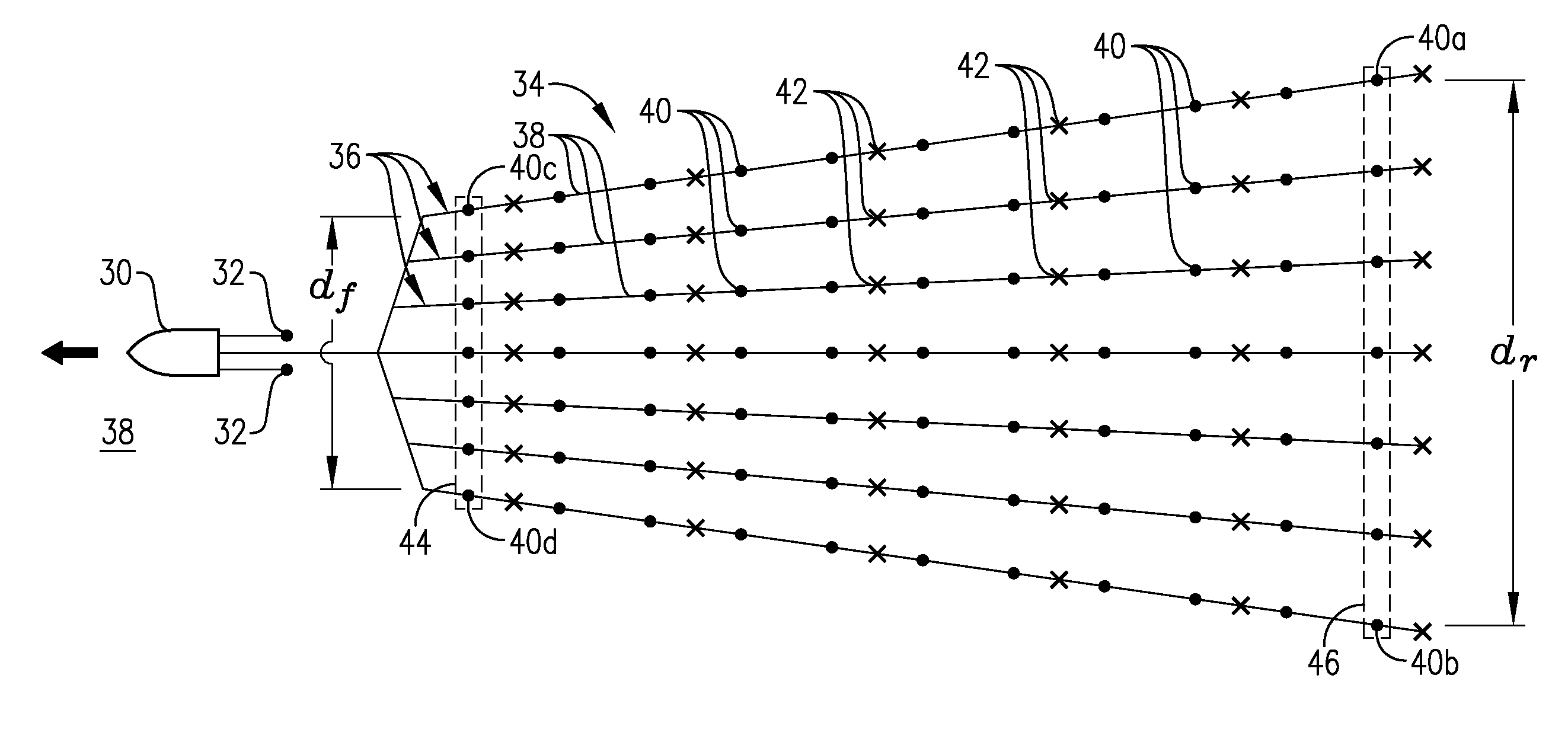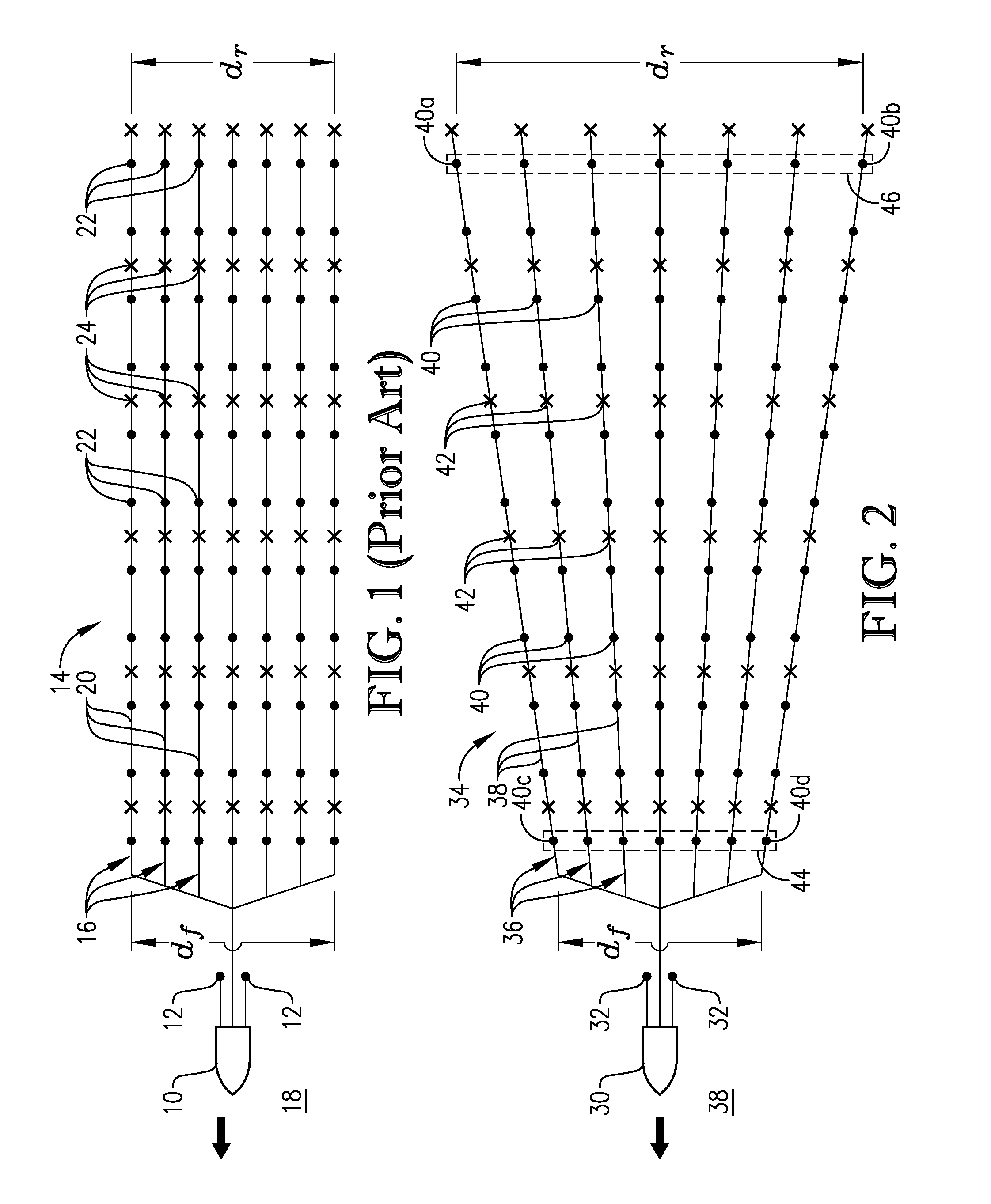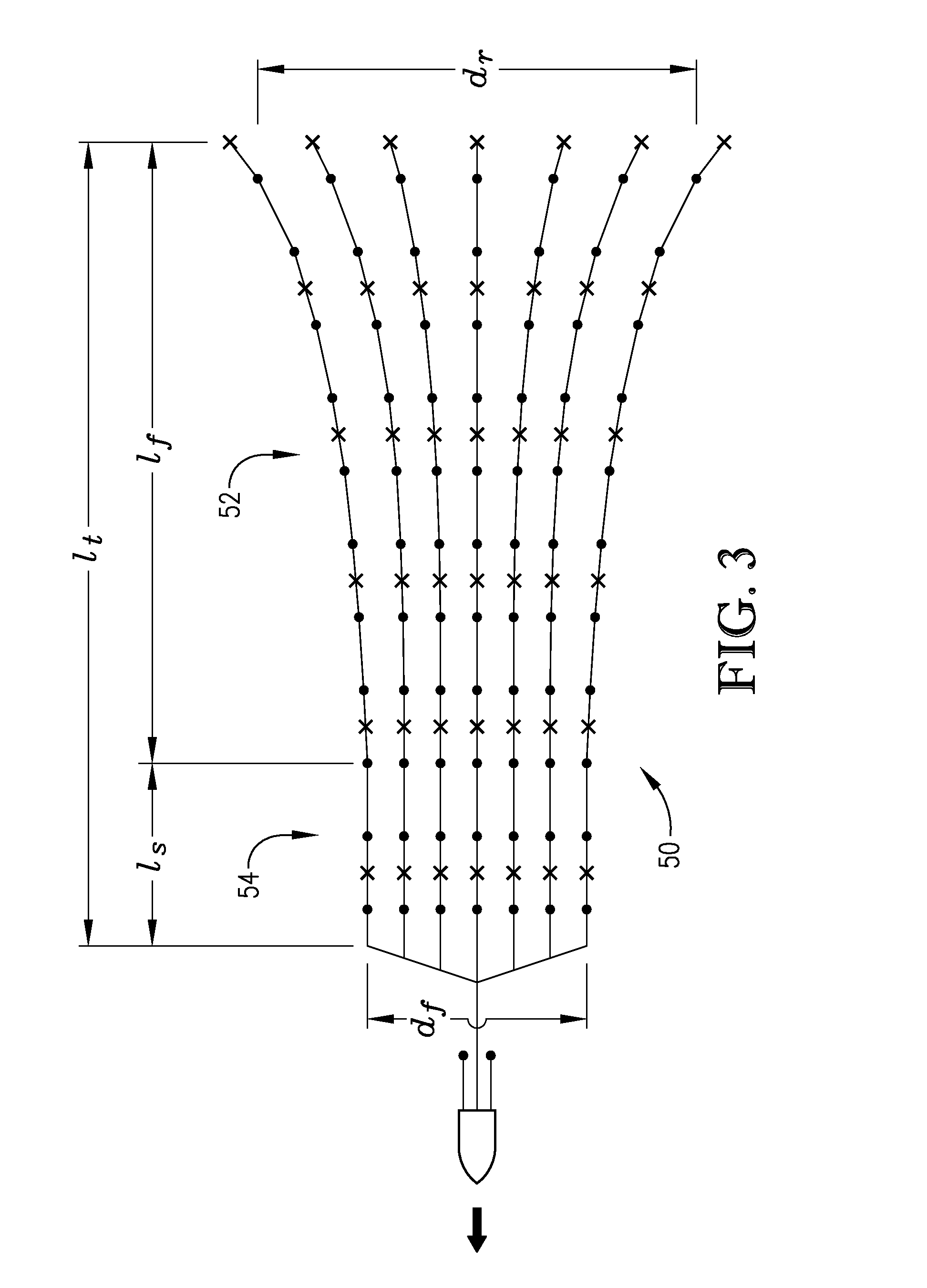Marine seismic acquisition with controlled streamer flaring
a streamer flaring and seismic data technology, applied in seismology, seismology, instruments, etc., can solve the problems of affecting the quality and utility of the resulting seismic data, the relative position of marine seismic receivers is variable, and the gap in the acquired seismic data is reduced or eliminated.
- Summary
- Abstract
- Description
- Claims
- Application Information
AI Technical Summary
Benefits of technology
Problems solved by technology
Method used
Image
Examples
Embodiment Construction
[0015]Referring initially to FIG. 2, a marine seismic data acquisition system according to one embodiment of the present invention is illustrated as generally comprising a marine vessel 30, marine seismic sources 32, and a marine seismic streamer system 34. The marine seismic streamer system 34 of FIG. 2 is depicted in a flared configuration. In accordance with various embodiments of the inventive marine seismic data acquisition process described herein, the streamer system 34 is intentionally maintained in a flare configuration and is used to gather marine seismic data, while the marine vessel 30 tows the seismic sources 32 and the streamer system 34 through a body of water 38.
[0016]The marine vessel 30 can be any vessel capable of towing the seismic sources 32 and the seismic streamer system 34 through the body of water 38 at an appropriate speed. Generally, appropriate speeds for the marine seismic data acquisition methods of the present invention can be in the range of 2 to 10 k...
PUM
 Login to View More
Login to View More Abstract
Description
Claims
Application Information
 Login to View More
Login to View More - R&D Engineer
- R&D Manager
- IP Professional
- Industry Leading Data Capabilities
- Powerful AI technology
- Patent DNA Extraction
Browse by: Latest US Patents, China's latest patents, Technical Efficacy Thesaurus, Application Domain, Technology Topic, Popular Technical Reports.
© 2024 PatSnap. All rights reserved.Legal|Privacy policy|Modern Slavery Act Transparency Statement|Sitemap|About US| Contact US: help@patsnap.com










